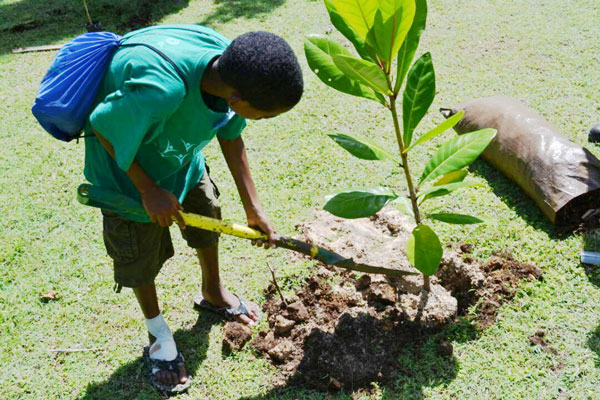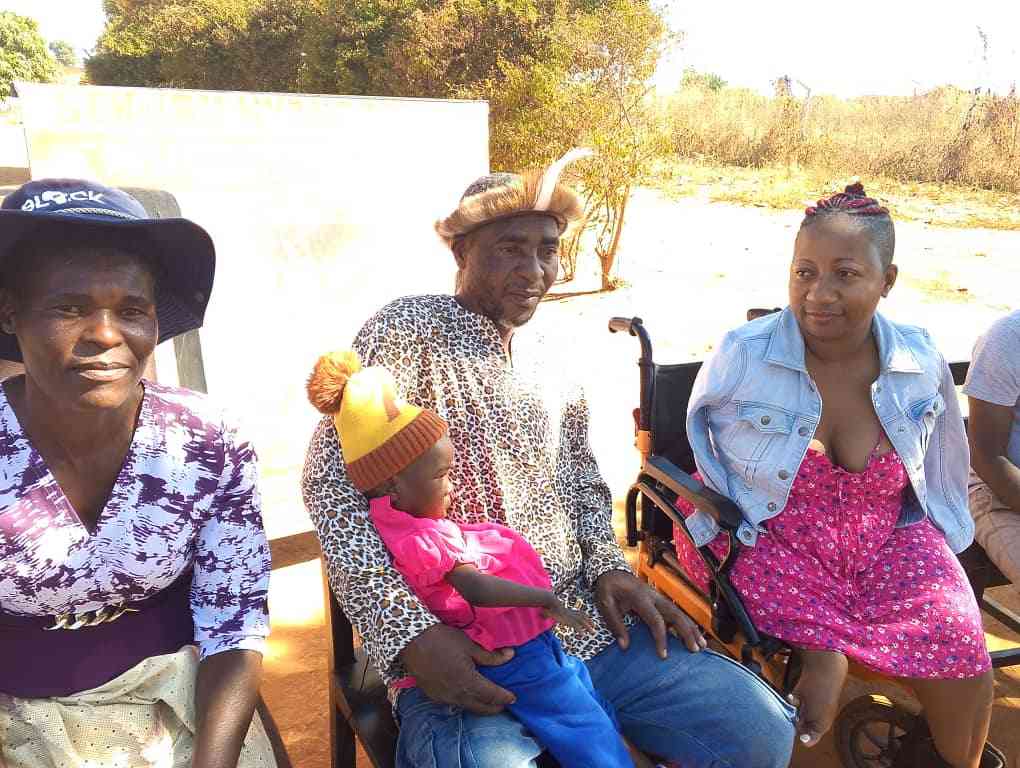
environment: By Simiso Mlevu
Located 18km north of Mutare in Manicaland province, Penhalonga-Tsvingwe people have watched their main natural water body and all the biodiversity that thrived as a result of the river’s healthy state, suffering stress and dying due to extractivism.
In November 2018, the world gathered in Kenya for the Blue Economy Conference to deliberate on the sustainable use of water bodies while preserving the waters for generations to come.
The conference, hosted by Kenya, Japan and Canada, was attended by over 18 000 participants from around the world.
According to the Blue Economy Conference website, world leaders wanted to find ways of how to “harness the potential of our oceans, seas, lakes and rivers to improve the lives of all, particularly people in developing states, women, youth and indigenous peoples” and also to take advantage of “the latest innovations, scientific advances and best practices to build prosperity, while conserving our waters for future generations”.
Water bodies have the potential of contributing towards the attainment of the United Nations 2030 Agenda and the Sustainable Development Goals (SDGs) of driving economic growth and social prosperity while protecting the environment.
However, unsustainable human activities continue to substantially threaten life under water and the resilience of aquatic ecosystems and the Penhalonga-Tsvingwe community is a live case study of those devastating actions.
From 2016 to 2018, Penhalonga and Tsvingwe villagers designed their Bio-Cultural Protocol (BCP), which is going to serve as a tool for proactive reactions to threats and opportunities posed by land and resource exploitation, conservation and policy frameworks.
- Chamisa under fire over US$120K donation
- Mavhunga puts DeMbare into Chibuku quarterfinals
- Pension funds bet on Cabora Bassa oilfields
- Councils defy govt fire tender directive
Keep Reading
In the BCP document titled Penhalonga and Tsvingwe Community Opposition to Destructive Mining Impacts, the villagers describe Penhalonga-Tsvingwe as previously a pristine area “with a rich biodiversity”.
“Until the late 1990s, the Penhalonga-Tsvingwe area had remained pristine, with a rich biodiversity — thanks to our stewardship of our land and natural environment,” villagers say as they describe their way of living in a detailed document coordinated by the Centre for Natural Resource Governance (CNRG).
They blame urbanisation, commercial mining and farming for tinkering with the community’s rich biodiversity.
“Our traditional way of life has been tampered with by urbanisation… large-scale farming and gold mining.”
While there has been a number of mining companies (mostly medium-scale) that have been extracting gold in Penhalonga, there are two major companies that are largely blamed by the Penhalonga-Tsvingwe villagers. These companies are Redwing or King’s Daughter Mine and DTZ-Ozgeo Mine.
Redwing Mine is a subsidiary of London Stock Exchange-listed Metallon Gold and is the largest mining company in the area. According to villagers, the mine is “dedicated to both underground operations and surface sand/slime retreatment operations and “uses cyanide.”
DTZ-Ozgeo is a joint venture between the Development Trust of Zimbabwe and Russia’s Econedra, which was doing alluvial gold mining on Mutare River from 1995 to 2014.
For the Penhalonga-Tsvingwe people, Mutare River is not just a waterway, but a source of livelihood, which has provided them with edible aquatic vertebrates like fish and useful plants like reeds.
The villagers, who for some time have watched helplessly as corporates destroyed the environment — the only heritage they ought to preserve for sustainable livelihood — decided to assess the harm by undertaking an environmental audit of the community.
In a 2018 environmental audit report produced with the help of Natural Justice, locals say Mutare River “is a source of water for many households… and is also used for fishing, both for personal consumption and for sale, and for weaving mats from reeds”.
However, they accuse mining companies of ravaging the water body.
“To carry out its mining activities, DTZ-Ozgeo restricted the flow of Mutare River at a number of points. These impoundments created artificial dams and badly affected the flow of water along the river,” reads the report.
DTZ-Ozgeo was forced by the Environmental Management Agency (EMA) to stop its operations in 2014 following an outcry from villagers regarding the environmental catastrophe it was causing on Mutare River, but since then, land reclamation has not been done.
EMA communications officer Joyce Chapungu could not give a definite response when asked if land reclamation was going to be done anytime soon.
“I need to find out from our Manicaland provincial office,” Chapungu said.
Zimbabwe has laws that protect the environment against destructive practices.
According to the EIA and Ecosystems Protection Regulations SI7, 2007, “no person shall . . . destroy any natural vegetation on, or dig up, break up, remove or alter in any way the surface or soil of . . . land within 30m of the naturally defined banks of a public stream or bed, banks or course of any river or stream”.
While no scientific assessment of the ecological damage has been done, geophysical impacts are evident to the naked eye and villagers say aquatic animals, plants and riverine birds in the area are nearing extinction.
Villagers say operations carried out by the mine affected the water quality, and depleted flora and fauna sustained by the river.
“The community noted a decline in the kingfisher or “jezenga” as a result of the disturbance of the Mutare River,” they note in the environmental audit report.
Jezenga is a magnificently coloured small and short-tailed bird with blue upperparts, orange underparts and a long bill. The bird mainly feeds on fish and lives in low-hanging nests along the river banks.
Section 67 of the Water Act buttresses that water resource management must be consistent with environmental approaches and contends that implementation of any “proposal for the use, management or exploitation of water resources, due consideration shall be given to the protection, conservation and sustenance of the environment and the right of access by members of the public to places of leisure or natural beauty related to water or water bodies”.
Although DTZ was established to drive national development projects, the organisation, which moved into Penhalonga-Tsvingwe in 2004, left the community poor and hungry, with nothing to eat and destroyed the pristine landscape, which used to be a marvel for tourists.
For Penhalonga-Tsvingwe communities, chemicals are not the only toxic substances that find their way into Mutare River. The community, in an environmental audit report, accuses Redwing Mine of failing to contain sewage from their toilets.
“The mine is failing to contain its waste system resulting in sewage running off into the river. The sewage spills into the Mutare River and Nyahuku River, which is connected to the Mutare River,” reads the report.
According to Section 57(1) of the Environmental Management Act, “any person, who discharges or applies any poison or toxic, noxious or obstructing matter, radioactive waste or other pollutants or permits any person to dump or discharge such matter into the aquatic environment in contravention of water pollution control standards shall be guilty of an offence…,” but the community accuses EMA of being weak and thereby ineffective against mining giants.
Preservation of the environment is the desire of the community, which feels that benefiting from exploitation of natural resources is their right because in September 2017, Zimbabwe acceded to the Nagoya Protocol on access to genetic resources and the fair and equitable sharing of benefits arising from their utilisation, a 2010 supplementary agreement to the 1992 Convention on Biological Diversity.
λ Simiso Mlevu is the communications officer at CNRG. She writes here in her own capacity.











